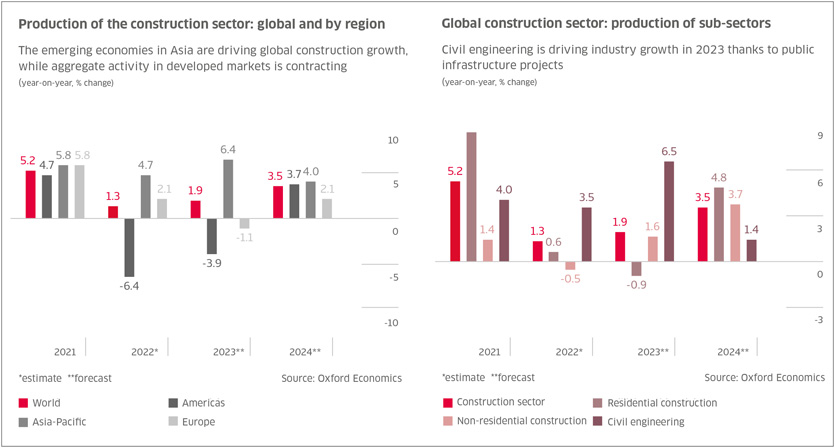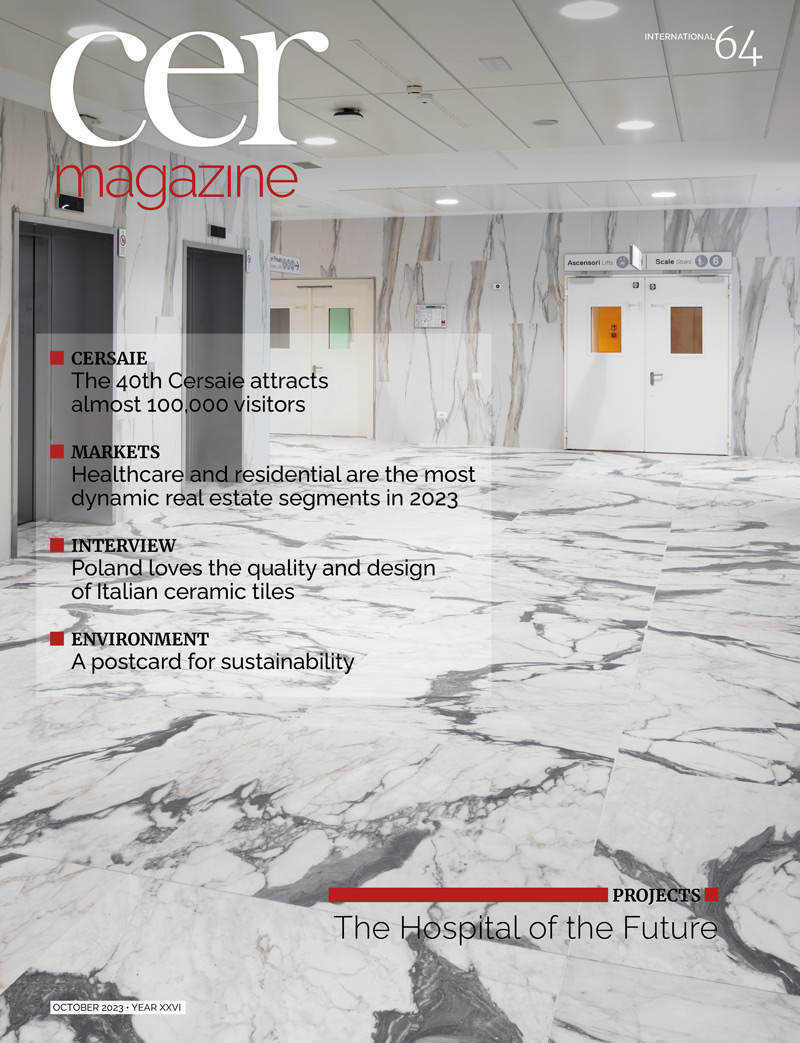Healthcare and residential are the most dynamic real estate segments in 2023
Luxury and healthcare real estate sales are growing, the office and housing segments are holding steady, and logistics is struggling amid an overall contraction in real estate values and transaction volumes. According to the report PwC Global & Italian M&A Trends in Real Estate, the global real estate market is continuing to experience a decline in 2023 following last year’s 15% drop in value and 13% decrease in numbers of transactions. There was a sharp contrast between the first half of 2022, which saw significant M&A activity in developed countries worldwide, and the second half of the year. However, demand for luxury properties is on the rise in 2023, with the Middle East and Asia-Pacific expected to be among the most active markets in the coming months.
In Europe, despite many EU countries registering GDP growth in 2023, the real estate sector is still struggling due to price repositioning caused by inflation, central bank policies and the consequences of the war in Ukraine. Rentals, logistics and offices are the hardest hit segments, but the prospects are still encouraging, with healthcare and residential real estate remaining the most promising sectors. This is the view of analysts from BNP Paribas REIM for the real estate sector in the second half of 2023, while Simona Costagli from BNL Economy Research believes that prices will remain steady across Europe.
At the same time, the Chinese real estate market is also experiencing a slowdown, reflecting the decline in the country’s economic growth. According to a report from China Index Academy, the percentage of foreclosed properties increased by 20% in the first half of 2023 to a total of approximately 179,000 homes. The American real estate market, on the other hand, is showing mixed signals. In June 2023, there were month-on-month increases in both home sales (+5.4%) and listings (+7.2%). However, the most negative year-on-year figure was that of sales, which were down by 18.7% compared to June 2022.
In the 52 metropolitan areas examined in the RE/Max USA Market Housing report, transactions in the first six months of the year decreased by 24% compared to the first half of 2022, and the number of new homes listed for sale increased by 0.5% from May 2023 but decreased by 25% compared to June 2022.
According to year-on-year data compiled in June 2023, the supply of homes in the United States has decreased by 10.7%, marking the most significant contraction in the past 13 months.
Returning to Europe, the real estate markets are still adjusting to the new economic environment, characterized by significantly higher credit costs compared to the past. Additionally, according to BNP Paribas, the ongoing price adjustment that began in the third quarter of 2022 continues to limit the expansion of the sector, as many investors adopt a wait-and-see attitude. This has led to a general decline in investments, starting from mid-2022, with investments reaching €29 billion in the first half of this year, the lowest level since 2012.
The logistics sector has experienced the most rapid and abrupt fall in yields, and investors remain on the sidelines, discouraged by the slowdown in international trade. However, the long-term prospects for the logistics sector are positive, and it is expected to grow over the next five years. Rental markets are also contracting, with recent data for offices showing that not only has remote work not been adopted on as large a scale as expected, but assets located in major business districts have proven to be very resilient in the long term, attracting sustained tenant demand and generating good yield levels for core investors.
According to BNP Paribas, healthcare and residential real estate are two segments that can look forward to positive long-term trends. Healthcare is expected to show the best performance over the next five years, while residential real estate will have to settle for lower yields due to a slower adjustment and lower capital growth. In general, it is advisable to focus on liquid markets in which the contraction phases are shorter, less costly and less volatile. According to UBS’s latest Global Real Estate Bubble Index Report, Zurich and Tokyo remain at risk and are classified as “bubble risk” cities.
October 2023






